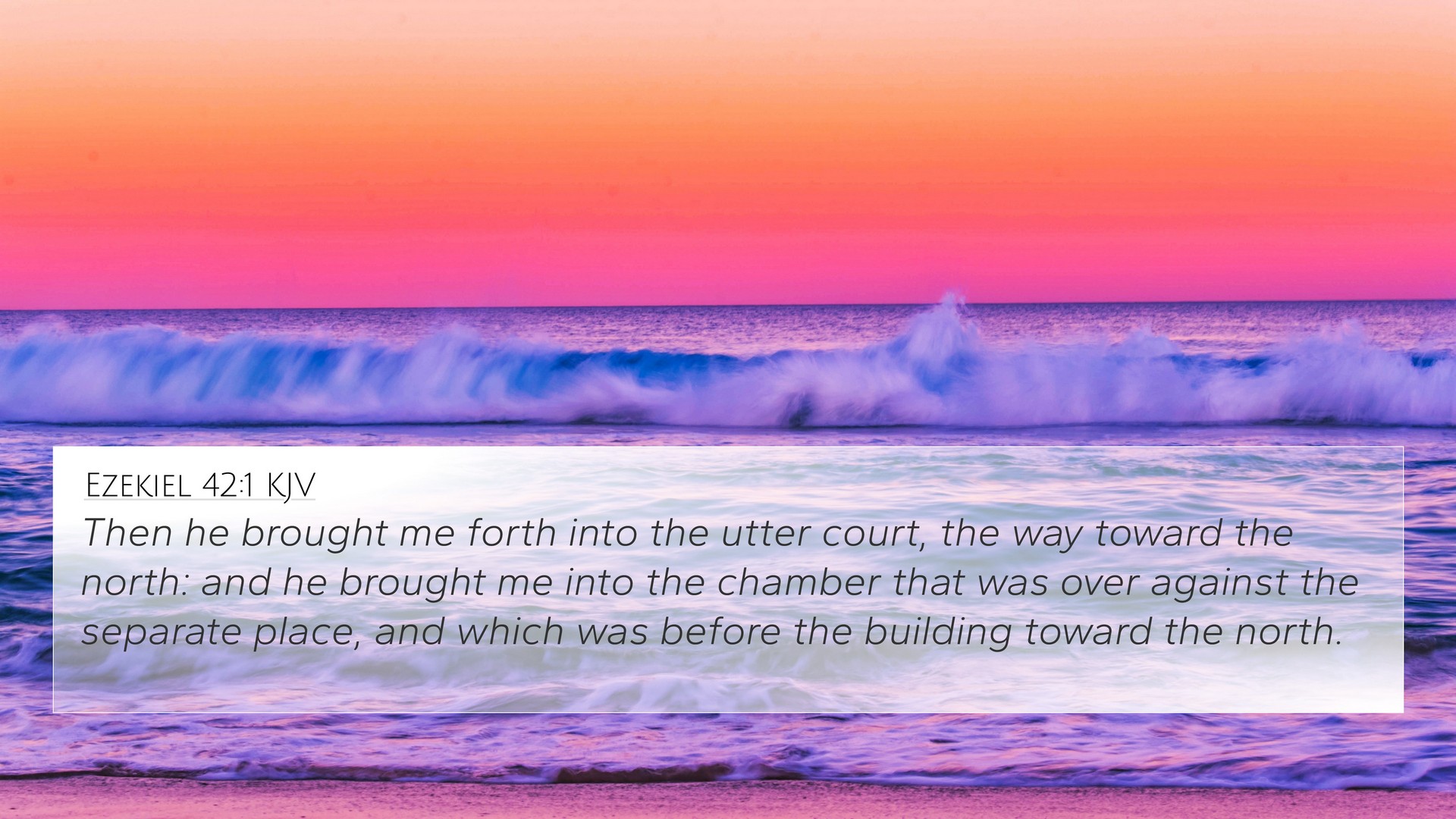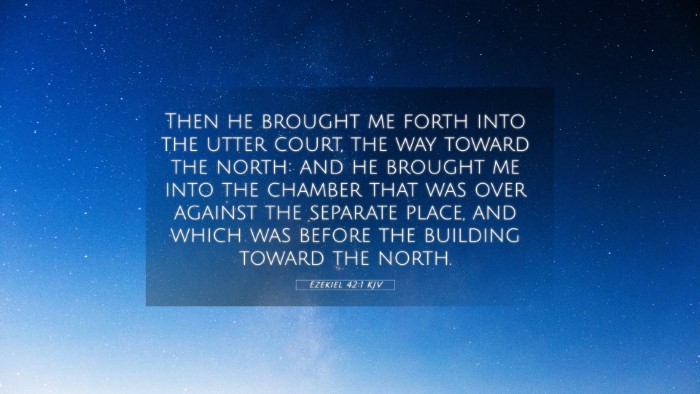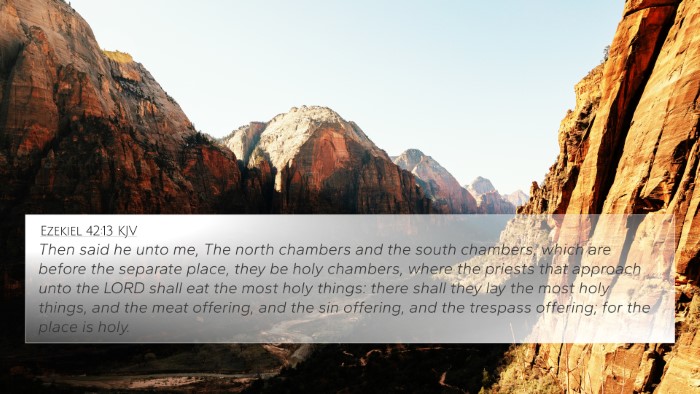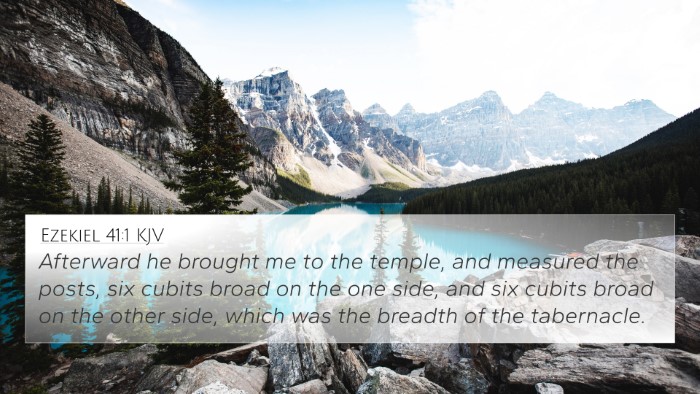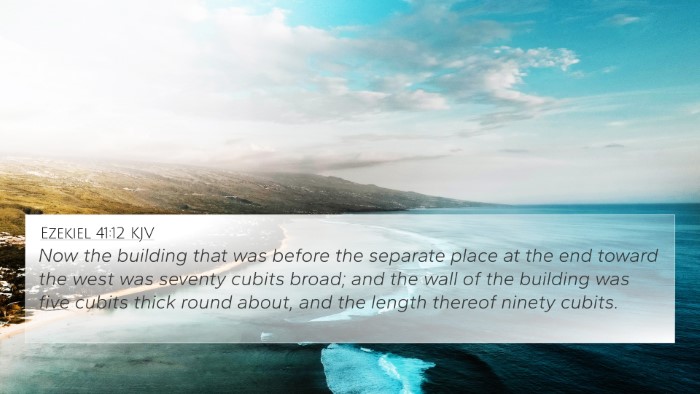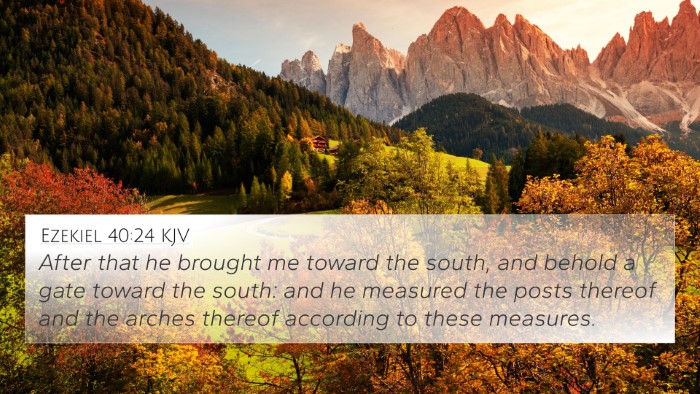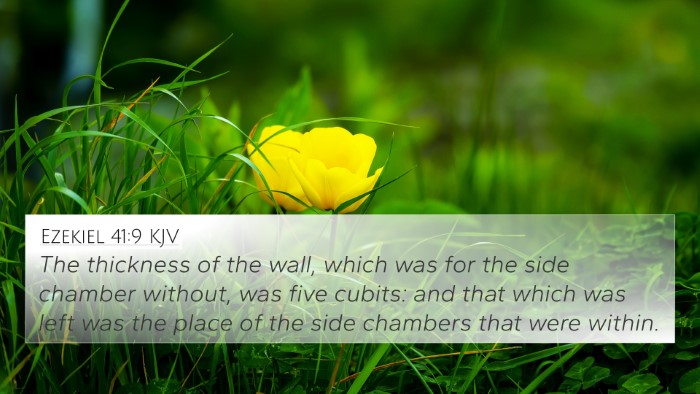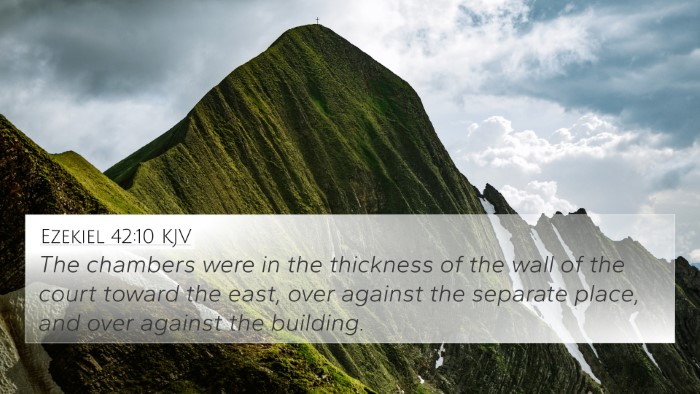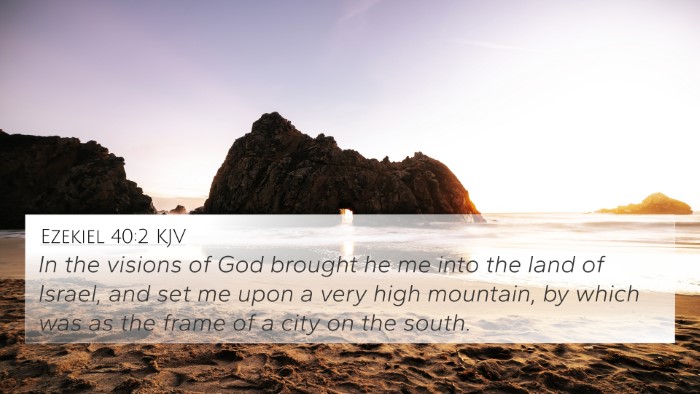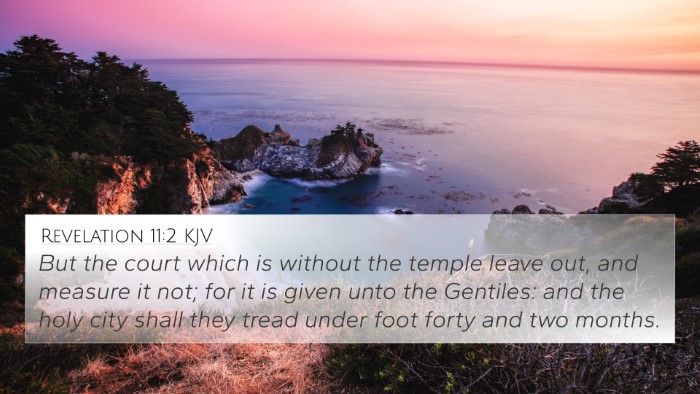Ezekiel 42:1 - Understanding the Verse
Ezekiel 42:1: "Then he brought me forth into the outer court, the way toward the north: and he brought me to the chambers that were over against the separate place, and which was before the building toward the north."
Summary and Meaning
This verse marks a significant transition in the vision of Ezekiel regarding the temple and its surrounding areas. As with other prophetic texts, it's essential to approach Ezekiel 42:1 with careful consideration of context, symbolism, and its implications for the future.
Contextual Significance
The vision begins to depict the structure and layout of the temple complex, emphasizing its holiness and the separation between sacred and profane spaces. The directions given—"outer court" and "north"—signify a detailed layout which was common in ancient structures reflecting divine order.
Thematic Connections in Scripture
This verse creates a thematic connection to several other passages within the Bible, showing how different scriptures relate to the concept of divine presence and sacred spaces.
- Ezekiel 40:5: Ezekiel's opening vision outlines the measurements of the temple, establishing a heavenly blueprint.
- Isaiah 66:1-2: These verses emphasize God's sovereignty and the true nature of worship, connecting to the importance of sacred spaces.
- Revelation 21:22: In the new heaven and new earth, the absence of a temple signifies God’s direct presence with His people, echoing Ezekiel's temple vision.
- Hebrews 9:24: This verse contrasts earthly sanctuaries with Christ's entrance into the heavenly sanctuary.
- Psalm 148:1: The call for all creation to praise the Lord reflects the holiness of God found in these sacred spaces.
- 1 Corinthians 3:16-17: Describing believers as temples indicates the transformative nature of God's presence within His followers.
- 2 Chronicles 3:1: Reflects documentation of the physical structure of Solomon's temple, grounding the significance of temple architecture in Israel's history.
Interpretative Insights
Insights from public domain commentaries enhance the understanding of this scripture:
- Matthew Henry: Observes the meticulous detail in the construction of the temple and its chambers, underscoring the importance of divine order and sanctity.
- Albert Barnes: Notes that the outer court symbolizes the accessibility of God’s presence, serving as a transitional space that leads to the deeper, more sacred areas.
- Adam Clarke: Highlights that this structure reflects God’s unchanging nature and His desire for a relationship with humanity through dedicated spaces.
The Importance of Cross-Referencing
Understanding Ezekiel 42:1 benefits from cross-referencing Biblical texts. By identifying links between this and other verses, we gain insight into the broader narrative of God’s plan:
7-10 Related Bible Cross References:
- 1 Kings 6:1-38: Provides the account of Solomon's temple, illustrating the continuity of temple worship in Israel’s history.
- Ezekiel 1:1-28: The opening vision of Ezekiel sets the stage for understanding the role of divine presence throughout his prophecies.
- Matthew 5:14: Highlights the idea of believers as cities on a hill, connecting to the concept of being set apart for holiness.
- 3 John 1:4: Reflects on the joy of seeing one’s children walking in the truth, paralleling the theme of divine order and relationship.
- Psalm 118:20: Speaks of the gates of righteousness, which offers a thematic parallel to the entrance into sacred spaces.
- Zechariah 6:12-13: The prophecy concerning the Branch aligns with themes of restoration and God’s promise to dwell among His people.
- Luke 12:32: Encourages the faith of His disciples, woven into the larger understanding of God’s kingdom and presence.
Cross-Referencing Biblical Themes
The practice of cross-referencing Bible verses allows for deeper insights into how various themes, such as holiness, God's dwelling, and worship, are interwoven throughout the scripture.
Tools for Bible Cross-Referencing
Utilizing a Bible concordance and other Bible reference resources can enhance understanding by uncovering connections that might otherwise go unnoticed. Integrating these tools makes for effective cross-reference Bible study, providing a framework to explore:
- How to identify connections between Old and New Testament writings.
- Detailed comparisons between the synoptic Gospels centered around shared themes.
- Exploring prophetic writings in relation to epistles from Paul to uncover continuity of message.
- How Psalms reflect New Testament teachings about worship and God's nature.
- Using Bible chain references for sermon preparation to illustrate themes through scriptural dialogue.
Conclusion
In conclusion, Ezekiel 42:1 serves as a gateway into understanding God's design for sacred spaces and the importance He places on the relationship with His people. By engaging in comparative Bible verse analysis and thematic Bible verse connections, believers can deepen their appreciation for the intricate tapestry of scripture.
